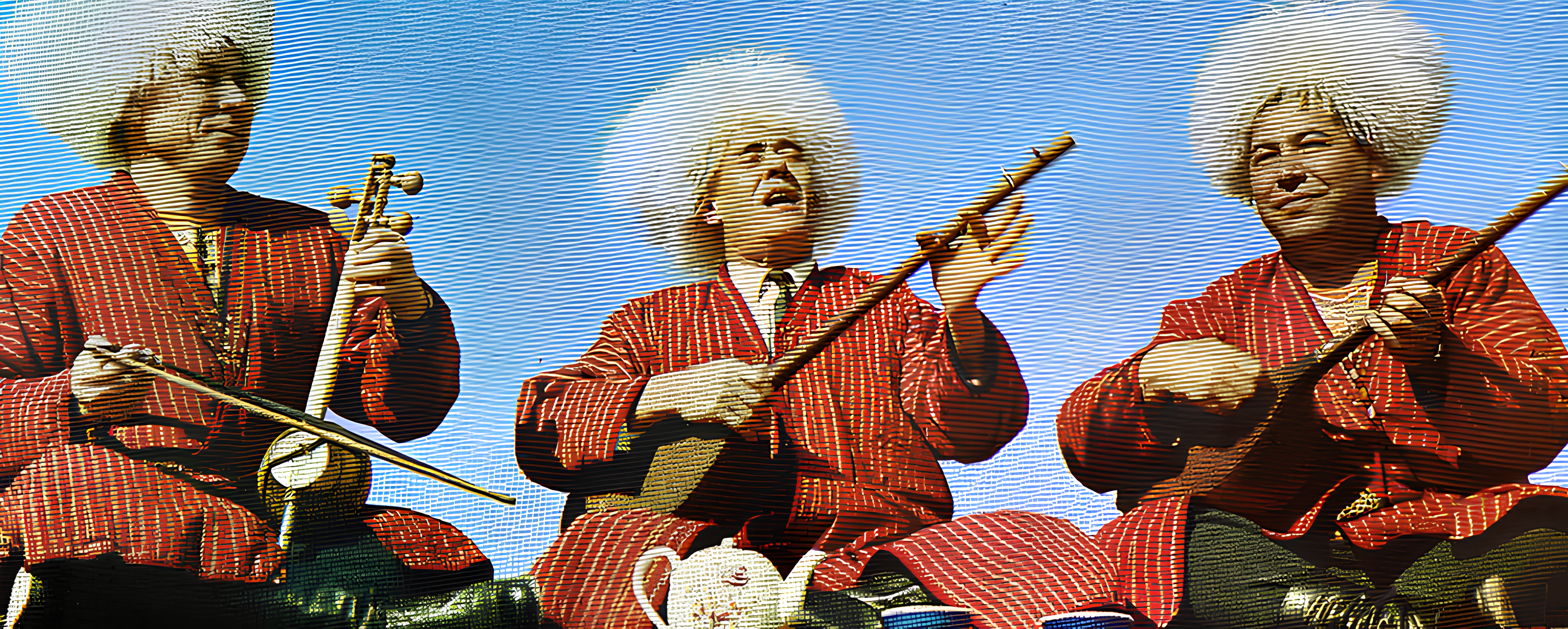

Folk music is a popular genre in Turkmenistan and is often played at weddings, festivals, and other social events.
It features simple melodies and rhythms and is often accompanied by traditional dances.
Ashik music is a type of ballad singing that is popular in Turkmenistan and other parts of Central Asia.
It features solo vocalists accompanied by instruments such as the dutar, and often tells stories of love, war, and other themes.
Classical music has a long history in Turkmenistan and is often associated with courtly life.
It features intricate melodies and rhythms and is played on a variety of instruments, including the dutar, gharmon, and daf.
The dutar is a fundamental part of Turkmen music and is used in all of the primary genres of music and singing in Turkmenistan.
It is a traditional instrument with a long neck, a pear-shaped body covered by a thin wooden sounding board, and two strings.
Dutar music can be played on its own or accompanied by singing or recitation of poetry and prose.
It plays an important role in Turkmen ceremonies, national celebrations, festivals, and social gatherings.
The gyjak is an upright instrument with three or four strings, played using a bow made of horsehair.
It is often crafted from a blend of apricot and mulberry wood and creates a sound that may remind you of the ever-changing Kara Kum desert or a prolonged screech.
Typically, it is played as an accompaniment to the dutar.
Turkmen literature comprises oral compositions and written texts in the Old Oghuz Turkic and Turkmen languages.
The Turkmens are direct descendants of the Oghuz Turks, who were a western Turkic people, who formed the Oghuz branch of the Turkic language family.
The earliest development of Turkmen literature is closely associated with the literature of the Oghuz Turks.
Turkmens have joint claims to a number of literary works written in Old Oghuz and Persian (by Seljuks in the 11-12th centuries)
languages with other people of the Oghuz Turkic origin, mainly of Azerbaijan and Turkey.
These works include, among others, the Book of Dede Korkut, Gorogly, "Layla and Majnun", and "Yusuf Zulaikha".
There is a consensus, however, that distinctively modern Turkmen literature originated in the 18th century with the poetry of Magtymguly Pyragy.
He is considered the father of Turkmen literature. Other prominent Turkmen poets of that era are Döwletmämmet Azady (Magtymguly's father),
Nurmuhammet Andalyp, Abdylla Şabende, Şeýdaýy, Mahmyt Gaýyby and Gurbanally Magrupy.
The 18th and 19th centuries are considered the era when Turkmen poetry flourished, marked by the appearance of poets
including Azady, Andalyp, Pyragy, Şeýdaýy, Zelili, and Gaýyby. Döwletmämmet Azady is known for his religious and
didactic treatise Wagzy Azat, written in the form of individual poems and short tales,
as well as the poem "Jabyr Ensar" and lyric poems.
The poet Andalyp, who lived at the same time, is the author of lyric works and novels such as Yusup and Zulaikha,
Laila and Majnun, and Sagd-Vekas. The language of the poetry of Azady
and Andalyp is far from the folk language and is oriented towards the canons of oriental court poetry.
Magtymguly Pyragy was a Turkmen spiritual leader, philosophical poet, Sufi and traveller who is considered the most famous figure in Turkmen literary history.
Magtymguly is the greatest representative of Turkmen literature, credited with the creation of Turkmen written literature,
and whose literary form became a powerful symbol of the historical and the incipient national consciousness of the Turkmen people.
He is part of a unique period in the cultural history of Central Asia, with his exceptional talent projecting his personal poetic synthesis onto the next generation of poets of the region.
In a wider context, Magtymguly is often placed alongside major figures of the Turkic literary world such as Hoja Ahmad Yasawi, Yunus Emre, Ali-Shir Nava'i and Fizuli.
Here is a poem Magtumguly made, BUT THE VIDEO IS IN TURKMENL!!: